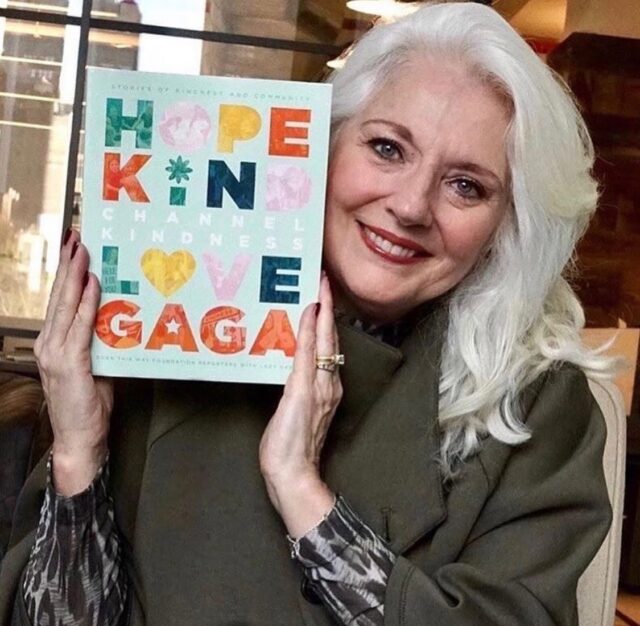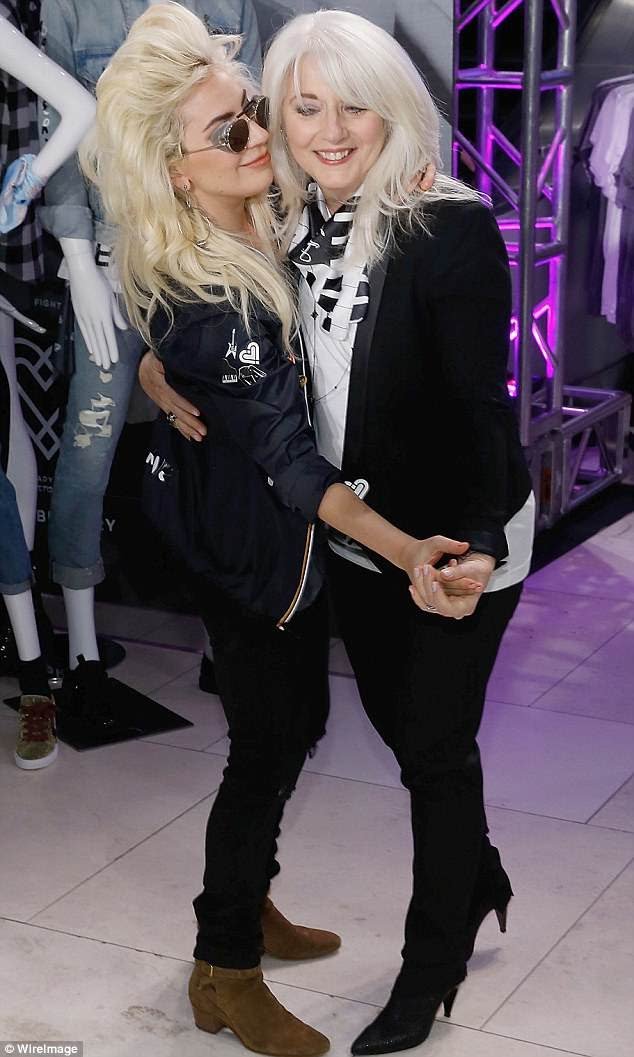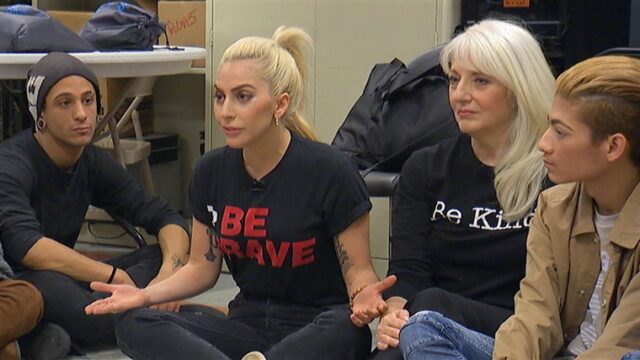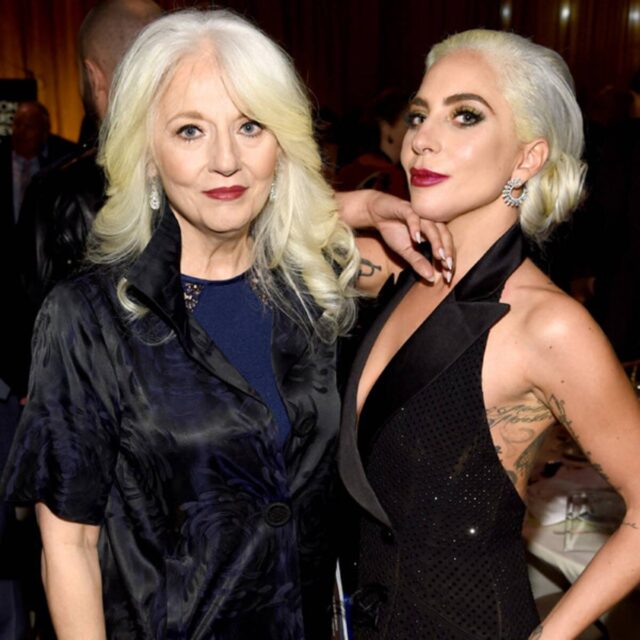
Cristina Cuomo: Hi Cynthia, I’m so excited to share your very important message with our Purist readers.
Cynthia Germanotta: I’m honored to do it.
CC: My husband sends you a big hello. He just walked in.
CG: A big hello back! I’m so happy your family is OK again. Tell him I was watching him as he continued to brave the network when he was sick.
CC: Yes. That’s all part of it—sharing what you go through so others can benefit from it, right?
CG: Exactly. It is.
CC: Mental health issues are at an all-time high in the U.S. right now, so your Born This Way organization is more important than ever. We talk about mental health as a disease often in Purist, we have lots of doctors contributing, and throughout quarantine and COVID we talked about escalating numbers and what people can do to help their loved ones and friends get through this crisis. So I wanted to hear from you: How did the idea for the foundation evolve?
CG: Thank you for the background. The actual origin was from my daughter. I feel like it’s an idea that was evolving from her childhood. As she grew up and entered those difficult middle school years, she encountered bullying and many other things that led to her developing anxiety and depression. It turned school into a very difficult situation for her, and it continued through high school. It led to destructive behaviors that she talks openly about. And ultimately, it affected her so deeply, that when she gained a platform to speak, it became an even stronger passion of hers to share her story based on her struggles and also to better equip young people who may encounter the same issues in their lives. We all go through things developmentally, and she has a very deep passion for equipping young people early. So we come at this from a preventive position. If we can prepare young people as soon as possible, they will have proper resources and tools to handle their struggles, and that is what we are all about. We’re founded on that and our mission is to build a kinder and braver world that is youth-led, and at the core of that is mental wellness. Our goal is making kindness cool. We do this every day, validate the emotions of young people, and work to eliminate the stigma around mental health. Kindness is the inspiration for my daughter’s life’s work, as well as her art. Very interconnected. It’s why we created the foundation and why we build programs that validate the emotions of young people and create what is truly the transformative power of kindness.
CC: That is so wonderful to hear. And the different initiatives and health programs you’ve set up across the country in schools before COVID, the Channel Kindness Platform, how has the back-to-school initiative changed since this year began, 2020 really?
CG: I guess I’ll say it’s upside down, you know? Even before this incredibly challenging year, we were seeing an increase in youth mental health conditions on many fronts—anxiety, depression and many other issues. And when faced with a global crisis, we had to adapt as advocates and leaders and work even harder to listen to and support the youth in this nation and beyond. We do have a digital platform; I and many members of my team have been able to speak out, posting conversations. We’re doing our best to meet young people where they are, and quite often, as you know, it’s online. And we’ve really been delighted to see a growing trend of young people being more willing to talk about their mental health. We’ve been focused on and fostering these conversations. You can see the urgency, and a lot of them want to help and be helped. But that’s the core of the issue: The reason they don’t go for help is they don’t know where to turn. That’s where we come in. They face significant barriers to getting the help they need, including the cost and of course the stigma, but fortunately we are seeing them turn to a lot of online resources now. There’s a lot of wonderful apps out there now, like Calm for anxiety, 7 Cups for online therapy, and of course there are many apps for crisis situations, including 211 and the Crisis Text Line. We’re seeing quite an increase. The youth, their parents and their teachers have had to adapt to this new schooling environment, and I think we all need to be mindful of that and help one another. It’s new to youth; a disciplined environment with a schedule and routine has been knocked off the table now. And teachers weren’t used to teaching online. And it’s a world that has been completely upended. But we’re seeing it work as best it can. A concern is that despite this, there’s been a continued increase in the rates of anxiety, depression and suicidal ideation. We’ve responded to that, particularly in the area of suicidal ideation, in partnership with an incredible organization called Find Your Anchor on a pledge called pleasestay.us. Basically, this app shows you how to find anchors in your life, whether that’s breathing for 30 minutes, going to therapy, exercising, walking in the park…whatever can anchor you for a particular day. We responded to that based on a CDC study that came out this summer concerning mental health, which found one in four people between the ages of 18 and 24 had contemplated suicide in the past month. That was just one month this summer. Those numbers are astounding and completely unacceptable. And that’s something we really wanted, to reach out to young people and assist.

CC: You did a wonderful talk at Léman, a school downtown, an international school.
CG: We love Léman!
CC: That’s where my sister’s twins go. And my friend Dr. Kelly Posner Gerstenhaber, who leads the charge in sucide prevention in our country, developed the Columbia Protocol, a collection of resources you can utilize with people who seem like they need help. It’s about providing everyone with the proper tools and information they need to help others. When you talk about anchors, and things like finding a good app, doing some form of exercise, and calming and motivating, can people fall into that category too? Can a person be an anchor?
CG: One hundred percent. In fact, we’re very much a research-based organization, so the programs we develop are informed by our research. And one of our past studies indicated that in times of crisis, young people prefer to turn to a peer; peer-to-peer support is vital and urgent. Young people don’t turn to their parents, generally, because they feel judged, or that their parents don’t share their struggles. We responded to that in a couple of ways. We partnered with two organizations. One, jack.org, has an app, bethere.org, which teaches young people how to mediate these tough conversations. It can be used by parents or children, peer-to-peer, to learn how to have those conversations and be there for yourself or others. We also partnered with the National Council of Behavioral Health to introduce an educational curriculum for grades 10 through 12; it teaches a young person how to recognize and respond to someone in a mental health or substance abuse crisis. We’ve introduced this initiative into more than 84 schools in the first few months. Then the pandemic hit. Fortunately, the program continues to expand, and we’re looking at a virtual version. But back to your question, yes. Quite often, one person can be a defining factor in another’s life, to be a trusted person to turn to share your emotions and concerns. As an adult, I have my anchors and my go-tos, which is the most important part of emotional well-being.
CC: Absolutely. My daughter launched a project for the Columbia Protocol called Just Ask. She did the social media for it, which involves this notion of peer-to-peer, talking to someone in your life. As a teenager herself, constantly challenged and stressed by school and friends and boys, she understands the value of her peers.
CG: That’s so wonderful. We see youth rising to the occasion. There’s a brother/sister team that we’re so fond of, Charlie and Hannah Lucas. In their early teens, they developed an app called notOK. Charlie is a tech person, and his sister was really struggling, and basically with a push of a button on your phone you can alert five people that you’re in emotional distress. And they’re there for you, you can come for help. And my point here, like with your daughter, young people are responding to their community’s needs with these apps. It’s just so wonderful to see. Congratulations to her.
CC: I love the book you came out with in September, Channel Kindness. Tell me about how that evolved, the inspirational stories and the contributors.
CG: We are all beyond proud of this book. It originated with my daughter’s courage to share her own story, that I didn’t really understand, when she first started performing around the world. During her concerts, she would start talking unscripted about kindness and the struggles she went through and the need to be brave and the need to have resources. And I used to ask her why she was talking about such private issues, but I came to realize that she was healing and young people were healing. She and her fans really grew up together, so it really resonated with them and they would say, “Gaga, how did you do it? How did you overcome what you faced? And if you did it, how can we get involved in something?” And other young people shared their incredible stories with us as we traveled the world. That was true bonding between my daughter and her fans and how they were leaning on and helping each other. It gave birth to our understanding of the power of storytelling. We started collecting stories as she would perform around the world. We collected stories for years before we developed the platform. That led us to introducing channelkindness.org in 2017 as a digital way for young people to submit their stories. We train them—we call it “adult scaffolding”. It’s unfair to invite them to do something without proper support. We coach them as best we can. We had weekend sessions where reporters and journalists came in to talk to them about how to do this. We’ve collected hundreds, if not thousands, of stories and seen the impact this has had, and that’s how the book came about. It’s a very unique, carefully selected compilation of these stories. It also features a story and notes of empowerment written by my daughter. She shares the beginnings of a lot of the difficulties she had. I like to say she was brave enough to share her stories, and made other people brave enough to share theirs. And now, through Channel Kindness, we invite the world to share their stories. Since the book’s launch we’ve seen readers of all ages now, inspired to engage in acts of kindness, encouraged to share, and it marks a movement led by young people. We’re so excited, and I invite you to read it, learn more about it, and your readers can purchase it almost anywhere, but also on our website, channelkidness.org/book.

CC: It’s so important, because we have to nurture and prepare our children to become stable, confident young adults. The constant reminders of doing that for parents as well is really important. We appreciate that. So you partnered with Chegg on a study concerning student food insecurity. Tell me a little bit about that.
CG: Yes. There were a couple of things. In one study we did with Chegg, which highlighted the difficult challenges youth in schools were having, 56 percent said they were moderately or extremely worried about their mental health; half reported experiencing anxiety; a third had experienced depression; and a quarter said they knew someone experiencing suicidal thoughts. Those are dire statistics. More recently, our study focused on food insecurity, and almost a third of college students have missed a meal once per week since the pandemic. That’s too many; we should all have three square meals a day. And that’s what we’re focused on, and we’re committed to continuing and expanding our research to support the well-being of young people and ensure that youth have the resources they need.
CC: That’s really, really important. We’ve done a lot to support different programs that are feeding children in school, because a third of children in this country get two meals a day from school programs, so it’s really key. And with everything being virtual, you’ve pivoted, which you’ve touched on in the beginning, into that virtual space, and you recently held a conversation on the topic of creating a kinder and braver world that is youth-led. You had people like Chelsea Clinton speaking on how the power of kindness can change the world, but how do you get that message out there virtually? Is that a big part of it now?
CG: It’s not just getting it out there; it’s also inviting and directing people to where they can participate in their communities. That’s part of what we did on a recent holiday campaign. We do it through two ways. One is our digital platform, and we also host a number of Born This Way Foundation talks to various communities that deserve to be highlighted to find out how mental health affects their community. We also publish our research to be sure that it’s also understood. For example, we know through our research that young people living in “kind” communities are generally healthier and have higher mental health inventory scores. These are very specific things that schools and businesses can do to adapt their environment to be more kind. So we provide these resources as outwardly as possible. For example, in high school, saying hello to a student can make a difference in their environment. It can make a difference in their mental health. It can help with absenteeism and productivity. My point is: These are not heavy lifts. They are simple and can be implemented to make young people feel like they belong.

The second way is through our partnership. I cannot be more proud of the extensive network of partners that our team has developed. Our stance is that this is a global issue, and one person can’t do it alone; we need to collaborate. We need to hold hands with other partners. So we tapped into this extensive network during our holiday campaign, and developed our #ChannelKindnessHoliday campaign with Together Rising and some other grassroots organizations to support communities that are disproportionately impacted by the pandemic. We call it shining the light, amplifying and activating one another’s work. We also have a campaign called #BeKind21. We know from research that if you do something for 21 days it becomes a habit, so this is a campaign that invites people to engage in acts of kindness daily for 21 days so it becomes integrated into your life. This is our third year of the campaign, and we’ve had almost 4 million acts of kindness generated this year. It has gone global. We have tool kits for schools that can implement this in the fall. It’s also implemented in the corporate world; one of our partners is Deloitte. Kindness is integrated into the fabric of their business, and we’ve partnered with the Chamber of Commerce for something called the Business of Kindness to really look at the effects of young people entering the workforce, and what that looks like. You can be a very strong and effective leader, or teacher, or student, and do it with kindness. It doesn’t mean we’re not strong or make difficult decisions, but it can be done with compassion and empathy for other people.
CC: I love that. It all sounds doable when you create this step-by-step process of change. Statistically, have you noticed its efficacy?
CG: We have. From the beginning, we recognized that this will be a multiyear process. We’re trying to build a generation that’s better equipped, kinder, braver. When my daughter said that this was her aspiration, it’s amazing but daunting. She says, “Well, Mom, if it was easy it would have been done already.” She wasn’t taking no for an answer! From the start, we carefully and strategically collaborated with incredible partners who were very skilled and experienced in this space to help us build this multiyear initiative that started with creating awareness around this, that would shift people’s attitudes and compel them to action. We’re coming up on our ninth anniversary and I’ve definitely seen the efficacy of the reach of this. It’s been very exciting.
CC: What are some challenges you face that you also plan to tackle in 2021?
CG: There are never enough hands and arms and partners to reach all the young people we want to reach. A constant challenge is scaling. We describe ourselves as gap fillers and bridge builders, and through our research we identify the gaps in what young people need to become healthier, both emotionally and physically. And we work together, or with our partners, to develop those resources for them. It’s a wonderful challenge to have; it’s what we’re faced with. Keeping up with all the things young people need. I think you’ll see a step more into the innovative space. We see a strong connection between technology and what young people are looking for, and we’re very excited about the coming year to go more deeply into that space.
CC: Is there a message you often share with a young person you meet who’s struggling with their emotional confidence?
CG: We often talk with young people in terms of scope and aspiration. We’ve seen success stories; we’ve seen young people come from the depths of darkness and turn their lives around. We always try to point them to resources. Their feelings are real, and we let them know someone is here for them, to give them hope that someone cares about them.



